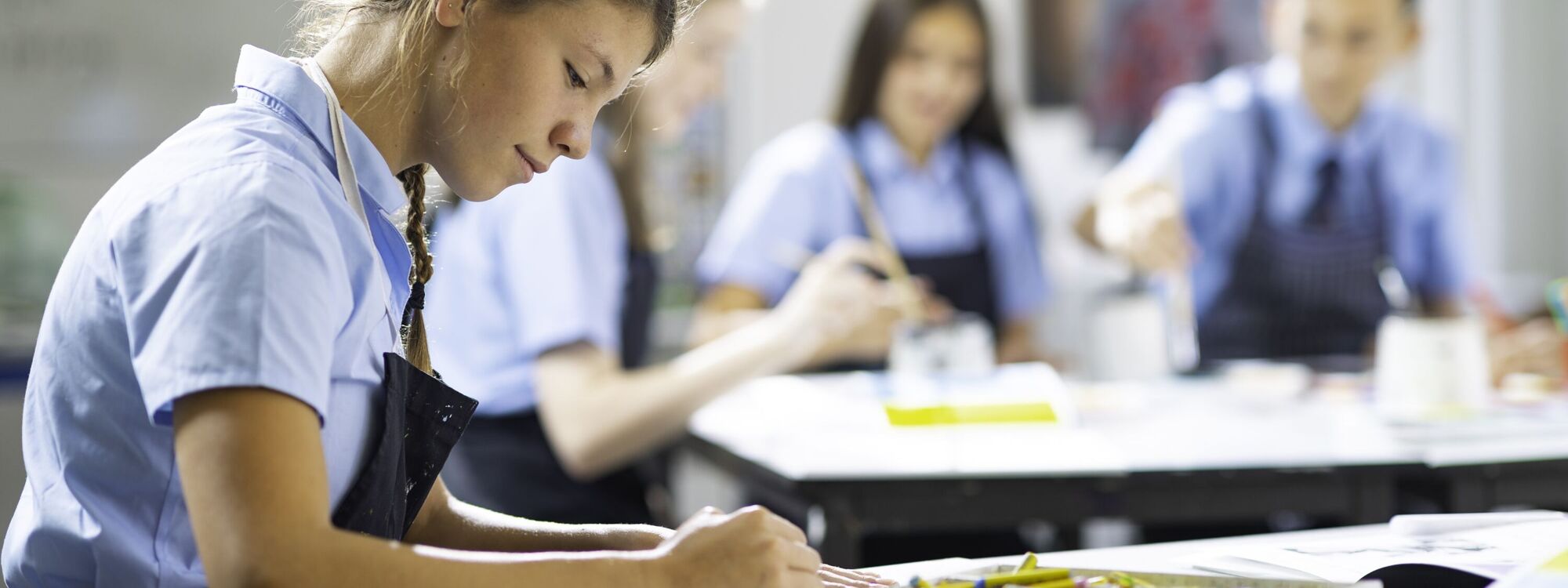
- Home
- Curriculum
- Subjects
- Art and Design
Art and Design
Back"I found I could say things with colour and shapes that
I couldn’t say any other way – things I had no words for."
Georgia O’Keeffe
Staff members
Mrs T Alighieri (Head of Department)
Miss O Clinton
Subject Definition
Art is a language used to express ideas and feelings that everyday words can nor express. Through arts, artists can convey ideas in ways that go beyond describing and telling.
Art is a form of power it has impact and it can effect change. It can not only move is it makes us move. Opinions, feelings, aspirations, expectations and re-evaluate.
Regardless of experience or skill to have a strong grasp of the fundamentals of art. These fundamentals are the basic building blocks for creating successful works of art. These fundamentals include the elements and principles of art and design. Without these building block you are unable access the knowledge to create an original piece of art with meaning.
Subject Purpose
The purpose of art is to allow people, both individually and in group settings, to express emotions, commemorate history, expose injustices, overcome obstacles, and gain an understanding of the world around them.
Art opens children’s mind to other modes of thinking, linking the relationship between politics, culture, history, philosophy and art. Forming well-rounded people.
KS3 Overview
Our emphasis at Key Stage 3 is the development of core skills, techniques and processes and a firm understanding of the formal elements of art and design. Interleaving skills, techniques and processes, underpinned by artist/contextual inspiration throughout every stage at KS3, empowers students with the confidence to harness their creativity in order to produce original and highly personalised outcomes, in response to each project theme. Students work through a series of projects that enable them to develop understanding of a variety of techniques and processes, whilst understanding how they can learn from the work of others. We explore the work of artists and designers from a wide variety of contexts, and students are supported in the development of their critical and analytical skills. Lesson work is supported by homework, which present opportunities to extend learning beyond the classroom with self-directed and in-depth explorations of a theme. Students have two lesson a cycle. We aim to give every student the widest possible experience of media, including drawing, painting, ceramics, printmaking, sculpture and mixed-media.
KS4 Overview
Students will embark on a programme of personal study choosing a selection of sub-themes. Students will create a multitude of expressive and experimental drawing in line with the new Eduqas WJEC specification and connection to their overall theme.
WJEC Eduqas GCSE Art and Design (Art, Craft and Design) C65QS
GCSE Art and Design overall mark is separated into two main areas:
Component 1 (60%)
-Component 1 – Surroundings. This extended Unit will allow students to produce several portfolio pieces that will complement the new specification.
Component 2 - Examination (40%)
Externally set by exam board. Students will choose between 15 set themes, images and tasks creating a portfolio of work and visual outcome. This unit is 40% of the students overall GCSE grade and cannot be worked on after the examination date. The examination is 10 hours over two days in T2 and T5.
EDUQAS Assessment Objectives:
-AO1: Critical understanding Develop ideas through investigations, demonstrating critical understanding of sources
-AO2: Creative making Refine work by exploring ideas, selecting and experimenting with appropriate media, materials, techniques and processes.
-AO3: Reflective recording Ideas observations and insights relevant to intentions as work progresses.
-AO4: Personal presentation Present a personal and meaningful response that realises intentions and demonstrates understanding of visual language.
